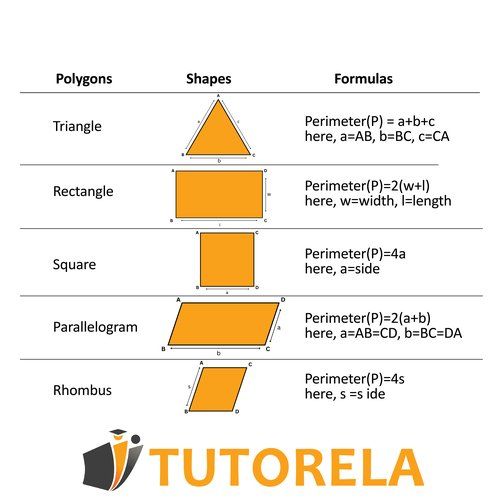As long as we are dealing with a shape characterized by straight lines, the perimeter calculation will be performed by adding together all of the side lengths. This is a simple arithmetic operation that does not require any special skills. For example:
Triangle Perimeter Practice Problems - Step-by-Step Solutions
Master triangle perimeter calculations with practice problems covering equilateral, isosceles, and scalene triangles. Includes detailed solutions and formulas.
- Calculate perimeter by adding all three triangle sides together
- Solve equilateral triangle problems using the formula P = 3a
- Find missing sides in isosceles triangles using equal leg properties
- Apply triangle inequality theorem to verify valid triangle measurements
- Work with real-world triangle perimeter word problems and applications
- Master perimeter calculations for scalene triangles with different side lengths
Understanding Perimeter of a Triangle
How do we calculate the perimeter of polygons?
The perimeter of a shape with sides of 5, 9, 4, 6 and 7, will be 31. All you need to do is simply add up all of the sides.
Why can such a question be challenging? Owing to the fact that in tests, they don't want to examine you on arithmetic operations like addition, but rather on your proficiency in the properties of specific shapes. Therefore, you need to know the properties of polygons as they are.

Practice Perimeter of a Triangle
Calculate the perimeter of the given parallelogram:
Examples with solutions for Perimeter of a Triangle
Look at the rectangle below.
Side AB is 2 cm long and side BC has a length of 7 cm.
What is the perimeter of the rectangle?
Given that in a rectangle every pair of opposite sides are equal to each other, we can state that:
Now we can add all the sides together and find the perimeter:
Answer:
18 cm
Look at the rectangle below.
Side AB is 4.8 cm long and side AD has a length of 12 cm.
What is the perimeter of the rectangle?
In the drawing, we have a rectangle, although it is not placed in its standard form and is slightly rotated,
but this does not affect that it is a rectangle, and it still has all the properties of a rectangle.
The perimeter of a rectangle is the sum of all its sides, that is, to find the perimeter of the rectangle we will have to add the lengths of all the sides.
We also know that in a rectangle the opposite sides are equal.
Therefore, we can use the existing sides to complete the missing lengths.
4.8+4.8+12+12 =
33.6 cm
Answer:
33.6 cm
Look at the rectangle below.
Side DC has a length of 1.5 cm and side AD has a length of 9.5 cm.
What is the perimeter of the rectangle?
Since in a rectangle every pair of opposite sides are equal to each other, we can state that:
Now we can add all the sides together and find the perimeter:
Answer:
22 cm
Look at the triangle below:
What is the perimeter of the triangle?
The perimeter of the triangle is equal to the sum of all sides together, therefore:
Answer:
24
Given the triangle:
What is its perimeter?
The perimeter of a triangle is equal to the sum of all its sides together:
Answer:
31